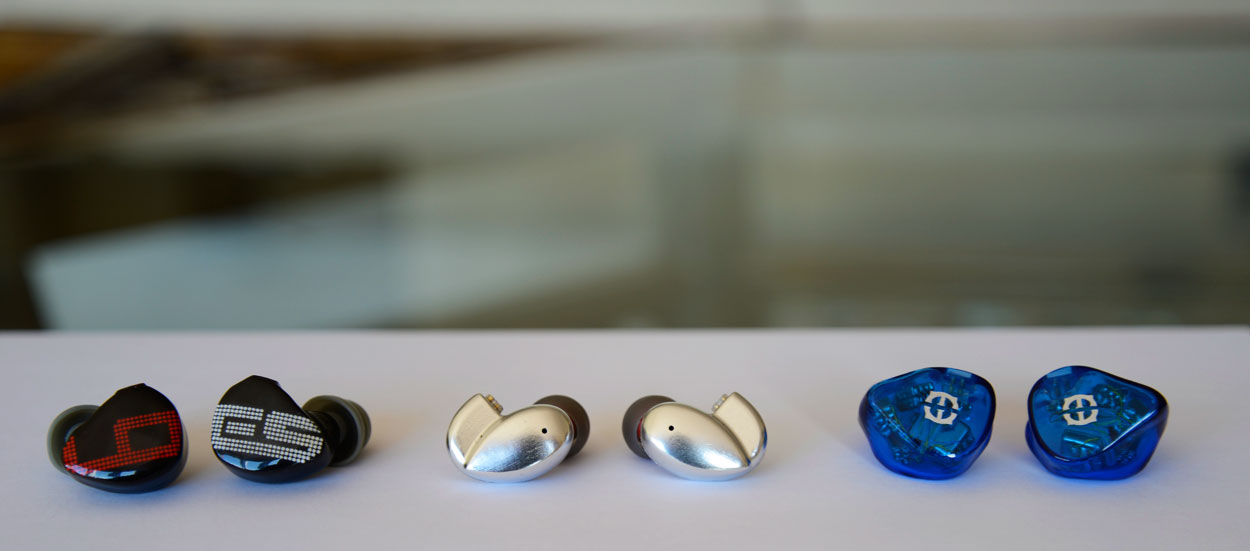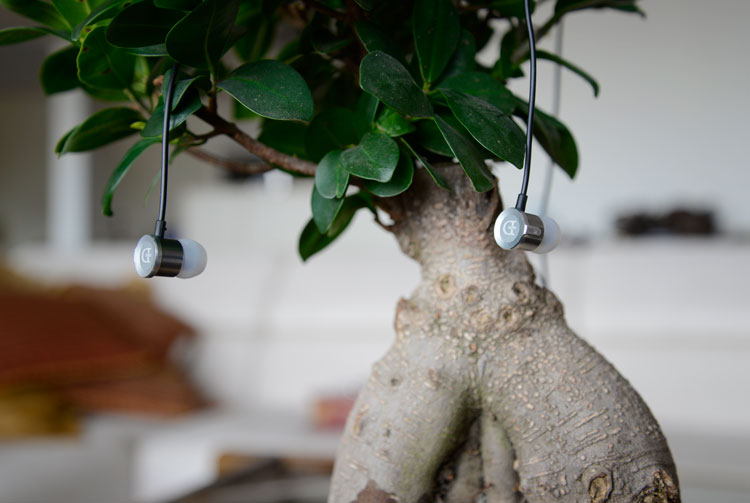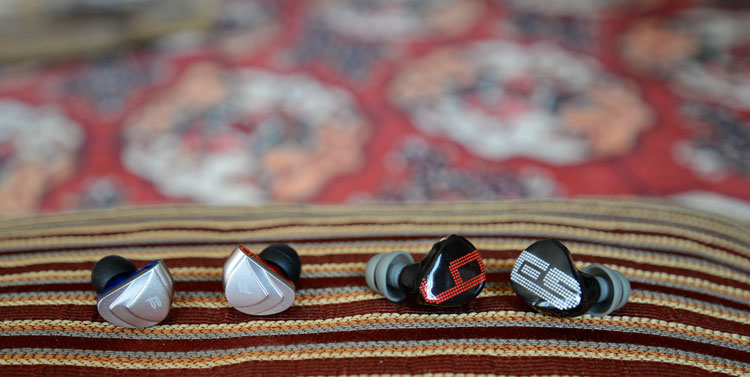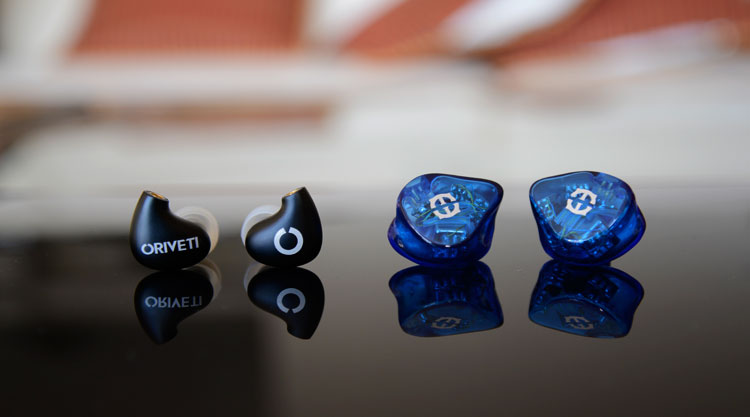Top of the consumer market vs audiophile excellence
Last year Dunu entered the market with their DN-2000j – a bold mission statement to offer high level quality, at a very affordable price. Dunu replicated AKG’s K3003 in sound and design – but at a fraction of the price. The DN-2000j offered a new level of resolution and detail in this price tier, introducing high fidelity audio to a wider audience. Word of the DN-2000j spread around the forums, and soon became a massive hit. Dunu showed that high quality can very well be achieved for a more affordable price, similar to what that other big Asian brand FiiO has being proving with their daps and amps. When I started to read a couple of reviews, I noticed people regularly used terms as ‘TOTL’ or ‘top tier’ when describing the DN-2000j; at first I wondered if this was misplaced, for looking at its price alone, there’s still plenty of room above it. But then I realized two things; first, there must be some quality in the D2Kj if top tier comes to mind in the first place.
Segregation
And second, more importantly, there’s a segregation of audience and price range; for the greatest majority of iems is sold in the $10 – $300 region. A different way of viewing this could be that the DN-2000j, together with its fellow competitors the Fidue A83 and recent newcomer Oriveti Primacy are in fact ‘top of the line’ with their price of $300 – but in the consumer-oriented market. Both the A83 and Primacy also come from Asian manufacturers, with a similar goal in mind: bringing a high standard of quality for an affordable price.
Similarities
The similarities don’t end there, as all three employ a hybrid design with one dynamic and two balanced armature drivers. But if we can even speak of a top of the market – how big would the difference be with the absolute top of more expensive audiophile market? And exactly where do the differences lie, if a great portion of the listening experience is subjective. To further investigate these philosophical quandaries, let me introduce the Rhapsodio Galaxy, a single dynamic driver with an exotic silver-gold cable ($1600); the EarSonics S-EM9 – first iem with 9 BA drivers ($1490); and mighty Zeus, Empire Ears’ world premiere with 14 BA drivers ($2099).
There are different ways of going about this review. For instance, you can compare the consumer iems to each other, and then the audiophile iems, and reflect on their difference. I could even do a shootout and have the best of each segment battle each other. However, I chose a different method – the buddy system. I decided to match a lower and higher tier iem with each other, roughly based on their signatures, and then try to show the relative difference for each couple.
The pairing as follows:
- Dunu DN-2000j vs Rhapsodio Galaxy
- Fidue A83 vs EarSonics S-EM9
- Oriveti Primacy vs Empire Ears Zeus
Resolution and transparency: the Dunu DN-2000j versus Rhapsodio Galaxy
Dunu DN-2000j
With great clarity and a detail-oriented sound, the DN-2000j is a truly remarkable iem. It can even be considered somewhat of a pioneer in its price class. Due to its upper treble tuning with impressive extension, it brought true hifi sound to the masses: top tier resolution at an affordable price. The DN-2000j is an iem that immediately impresses, while basking in full glory of its flaws. The separation and detail is simply outstanding, period – even compared to high-end monitors. But to get there, it takes a rather analytical approach. Its signature is the result of two main features: a cold and well-controlled mid-bass that doesn’t give a shrug of warmth to the presentation, giving it a very clean and airy stage; and treble peaks in the mid and especially upper treble regions. The first peak gives it a wide and airy soundstage, while giving great definition and clarity to instruments. The treble sparkles in abundance, but has a cold tone and is rather thin. The second peak boosts its treble extension, the framework for its high resolution, uncovering fine detail previously unheard. The result is a level of detail and clarity that is simply outstanding.
Low Volume King
Forget the high tech ADEL module; if you want to listen at low volume, the DN2Kj is where it’s at – at a fraction of the price. When played at low volume the Dunu remains well within the realm of what is considered a balanced signature, while bringing out an incredible amount of detail. The midrange is detailed and clear, its bass has a nice texture and is neutrally tuned without being low on impact. However at higher volumes, the DN2Kj’s virtues can becomes its downfall. Due to the mid treble peak, it can become prone to sibilance, regardless of the recording. The upper treble peak that gives it a great deal of sparkle and transparency, but is sensitive to bad recordings and can be icy sharp at times.
Overall the treble is fairly prominent in the presentation, bringing high hats and small details forward, even when the focus of a track is to be soothing and fluent. The emphasis on the upper frequencies results into a pronounced V-shape, which can skew the tonality at the cost of tonal naturalness and trueness. The lower and center midrange fall back, and especially male vocals and heavy rock ‘n roll guitars (or bass-driven instruments like the cello or bass saxophone) can sound thin or hollow.
Rhapsodio Galaxy
High resolution and a neutrally tuned sound: Rhapsodio recently introduced their latest addition, the Galaxy. Employing a single dynamic driver, The Galaxy has an incredibly linear low to mid frequency range, that only starts to rise in the lower treble resulting in peak around 5khz. The Galaxy is tuned to sound as flat as possible, with the treble peak only to increase overall resolution – very similar to the DN2Kj. They both share a similar distant stage presentation; instrument positioning placed further back on the stage. The Galaxy can also be considered a detail-oriented, high resolution monitor with a tonality skewed toward the upper frequency, which affects its tone. With a regular cable it can sound metallic, clinical and just off concerning its tonality. But Rhapsodio supplies the Galaxy with a unique silver/gold cable, the ‘2.98’. The 2.98 cable has a warm, midforward tonality that attenuates the upper end sharpness and fills up leaner iems. The combination provides the Galaxy with a warmer, smooth sound as well as greater balance between the frequencies, while maintaining its high resolution.
Its stage isn’t overly wide, but is deeper than the DN2Kj. The DN2Kj and Galaxy share key features that determine their signature. The bass and midrange are relatively flat, but stand in the shadow of the treble for one reason: the ultimate quest for resolution. Resolution is often associated with detail retrieval, but affects every aspect of the presentation; how sharply instruments are defined and separated. Due to the stage positioning, instruments are smaller and slightly leaner. Their main difference concerns their holistic presentation: the DN2Kj has an analytical presentation void of warmth, with highly prominent upper treble. Despite its pronounced U-shape, it can handle a lot of genres. However smooth, mid-heavy tracks that rely on deep male vocals or heavy electric guitars can sound metallic and thin. The Galaxy’s smoother signature not only helps to attenuate upper treble harshness, but contributes to a more allround applicability.
Smooth and engaging: the Fidue A83 versus EarSonics S-EM9
Fidue A83
The smooth and sweet-sounding A83; the A83 shares a similar V-shaped curve as the DN2Kj, but lacks the second defining treble peak. It’s the dromedary to the DN2Kj’s camel if you will. This results in a compromise between a lower level of detail retrieval and overall resolution, for a smoother, and more natural tone. The warmer mid-bass also helps here. Similarly to the DN2Kj, a slight recess in the lower midrange creates a more spacious stage; but at the same time the A83 also has leaner notes, missing a bit of fullness from the center and lower midrange. On the plus side, there’s less competition for space on the stage: separation is very good, and instruments fan out very nicely in a semi-circle.
Like the DN2Kj, the A83 discriminates against male vocals – they can sound a bit hollow. Vocal articulation is clear and precise, it just misses a bit of depth and power – sound being produced from the behind the throat, and all the way down to deep within the chest. As such the A83 much prefers female vocals, the sweet kind rather than the Adele’s and Nina Simone’s of this world. It’s in the upper treble where the A83 differentiates itself from the DN2Kj; while it doesn’t have the same level of resolution and sparkle, it’s smoother to listen to and doesn’t have that ‘icy’ sound at high volumes. The A83 has a pleasing warmer tone, compared to the clinical DN2Kj. This does bring out a bit more emotion in vocals, although the DN2Kj has greater transparency. Overall the A83 is a smooth sounding monitor, with an emphasis on the upper midrange.
EarSonics S-EM9
Light on its feet, but agile and quick. The S-EM9 might not be the fullest sounding monitor, it’s a great all-rounder that excels in dynamics. A true EarSonics, worthy of its flagship status. Like the A83, the S-EM9 has slightly leaner notes and a preference for female over male vocals male based on its signature. And it equally gets a hint of warmth from the mid-bass that adds an emotional tone to instruments and vocals. But the S-EM9’s sub-bass hits deeper and harder, while the lower treble is more accentuated; high hats are just a bit more emphasized, while the S-EM9 steps ahead in detail retrieval. Despite that the S-EM9 has slightly leaner notes than rival TOTL’s due to its U-shaped signature, it impresses with a refined, delicate presentation and dynamic sound – the S-EM9 sounds fast and precise, compared to the more laidback A83. The S-EM9’s stage isn’t much wider, but it is both deeper and taller. Instruments can be more clearly localized in a three dimensional space, as well as their relative position in the depth of the field.
Vocal specialists: the Oriveti Primacy versus Empire Ears Zeus
Oriveti Primacy
Smooth, effortless and a pleasantly warm ambiance; a sound that strikes me as mature and very well balanced. Oriveti is one of the newest companies to present a $300 hybrid in the wake of the A83, DN-2000J, and more recently FLC8S. Oriveti is also an Asian-based company, but the Primacy was tuned in England. Whether or not that was a determining factor, the Primacy does take a very different approach than both the A83 and DN-2000J. Both of those iems seem to go for more of a ‘wow effect’, by an upfront presentation of detail due to a brighter, more pronounced V-shaped signature.
The Primacy differs from its $300 companions by presenting music from an inherently warmer atmosphere and more W-shaped tuning. The combination of the warmer tone with a bump in the center midrange lays a solid groundwork for vocals to excel. Especially male vocals are articulated with good depth – sound being produced from the throat and chest, as well as density – the ability to picture a clear center image of the singer. The Primacy has a full midrange with good ability to create thick juicy notes; rock and roll guitars convey the necessary size and power.
The Primacy’s midrange hump is followed by a dip in the upper midrange through the lower treble, only to spike again in the mid treble region – in what’s becoming a common theme in this segment. As a consequence of the lower treble dip the Primacy doesn’t have a particularly airy sound as the Dunu for instance, nor does it have a particularly wide soundstage. The mid treble peak adds an artificial edge to the tonality, but it’s a compromise to boost overall clarity and bring detail retrieval to an acceptable level.
Empire Ears Zeus
It’s because of the same center midrange bump that when Zeus calls, its voice is heard. Where the Primacy’s bass is close to neutral, Zeus’ slightly enhanced mid-bass gives more size to the presentation – filling up the lower midrange, and creating thicker notes. Vocals are produced from deep within the chest, gaining power in the throat, while being articulated clearly in the mouth. Zeus’ midrange is forward, clear and detailed; from the lower to the upper midrange. The upper bass is more resolved, and instruments relying on that end of the spectrum like bass saxophones or even the lower end of heavy electric guitars are better defined.
While as the Primacy there’s a slight dip in the lower treble, the treble is not only more linear, it’s also a great deal more extended. The consequence: both refinement and resolution. Zeus presents detail from its highly resolving nature; there’s no need for the treble spike. This creates a more natural tonality, and makes it less prone to sibilance. The treble extension affects instruments definition: the tone of an instrument is more precisely defined. While the Primacy’s imaging isn’t bad, Zeus paints a three dimensional picture: it’s not only the perception of depth, but the excellent layering that takes Zeus’ stage to a different level. The location of instruments is easily identifiable on an X-Y-Z axis, compared to the flat screen of the Primacy.
Page 3: The Verdicts





